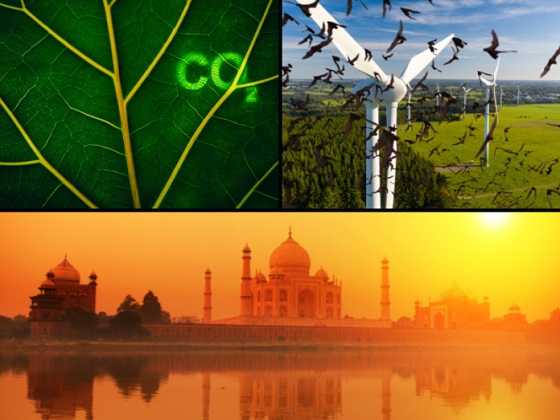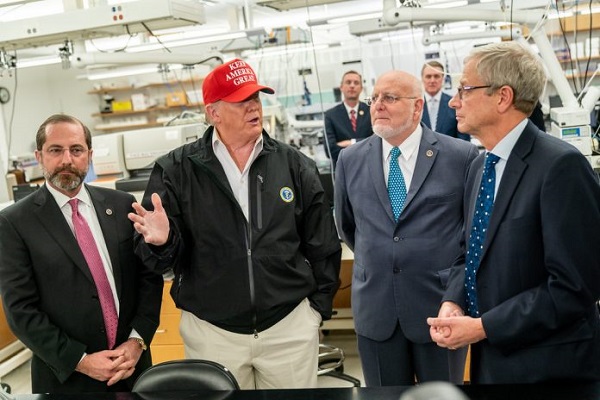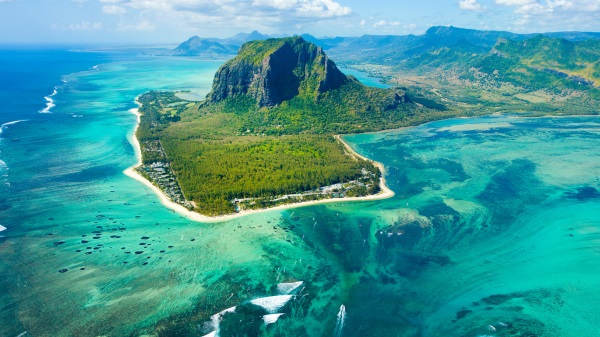Heartland Daily News
Carbon Dioxide Levels and Warming Aren’t a Problem, New Study Says

From Heartland Daily News
A new paper published in the peer-reviewed American Journal of Economics and Sociology by petrophysicist Andy May and science journalist Marcel Crok, both with the Climate Intelligence Foundation (Clintel), presents a fact-grounded, well-structured argument indicating the world does not face a climate crisis. Their claims are well-documented with copious footnotes directing readers to the underlying research.
May’s and Crok’s research directly refutes claims made by the Intergovernmental Panel on Climate Change’s (IPCC) Sixth Assessment Report that:
Human-induced climate change … has caused widespread adverse impacts and related losses and damages to nature and people, beyond natural climate variability. … The rise in weather and climate extremes has led to some irreversible impacts as natural and human systems are pushed beyond their ability to adapt (high confidence).
They examine both the claim that we can be certain that humans are mostly or wholly responsible for current climate changes, and that the ongoing climate shift, with modest warming, is causing worsening extreme weather and harm to humans, finding both claims lacking.
The IPCC’s claim that humans are causing climate change rests on two primary pillars: simulations of the climate in general circulation models (climate models) with and without rising CO2 emissions; and claims of an “atmospheric fingerprint” from the differing ways in which the stratosphere, and the middle and lower troposphere are responding to rising CO2 concentrations.
Concerning climate model simulations, May and Crok point out that even the IPCC admits that despite 38 years or more of tinkering and creating new models with updated assumptions about climate sensitivity, the climate models’ projections grossly overestimate surface and ocean temperatures, and that the warming experienced doesn’t track well (in a direct causal fashion) the relatively constant rise in carbon dioxide emissions.
Concerning the “atmospheric fingerprint,” May and Crok point to several lines of evidence that suggest factors other than CO2 can account for the differences in the ways temperature is changing (or not) in different layers of the troposphere and the stratosphere. Some research suggests changes in atmospheric aerosols and the ozone (both with human causes) have impacted the climate, affecting temperatures changes in different ways at different layers of the atmosphere. Other research points to solar activity playing a role in temperature shifts.
The most persuasive evidence May and Crok present that suggests nature is playing a greater role in present climate change than the IPCC admits is their examination of the Atlantic Multidecadal Oscillation (AMO), comparing changes it since 1850 to changes in surface temperatures from the widely used and cited HadCRUT4 global average temperature data set. When the two data sets are overlayed, they match very closely.

Indeed, the data indicates the AMO alone could account for as much as 30 percent of the warming over the past 150 years or so. In addition, the AMO seems to shift in about a 70-year cycle, the most recent shift coinciding with warming since 1980. They modestly conclude that, collectively, these different lines of evidence “cast some doubt on the AR6 claim
that all 20th century warming is due to human influence and there is no net natural impact.”
Regardless of whether humans bear no responsibility, some, or are completely absolved for the recent moderate warming, the evidence clearly shows that, contrary to IPCC assertions, there is no significant worsening in weather extremes or the harms different incidences of extreme weather are causing. They point to data which show conclusively that:
Currently it is very hard to find any unusual weather or weather-related disaster that can be blamed on climate change, whether natural or human-caused, despite constant news media claims to the contrary. … Weather-related disasters occur every year. But the trends in the cost, as a fraction of GDP, or human suffering and death due to them are, respectively, flat or rapidly declining ….
Globally, most damage (around 90%) from extreme weather by far is due to flooding and severe storms, such as tropical cyclones. The most damaging extremes, hurricanes, floods, and (weather-related) droughts have not changed globally on climatic time scales (>30 years). The earth has warmed by slightly more than one degree Celsius, and the CO2 concentration has gone up, but the most dramatic, destructive, and deadly extreme weather events have not changed significantly or have declined. Further, 52 of 53 studies of disaster losses due to extreme weather were unable to attribute the events to human causes, and the one study that did claim human attribution was flawed.
May and Crok point to the IPCC’s own statements to bolster their claims. Concerning flooding, high frequency rain events, and river flows, the IPCC admits, there is “low confidence in the human influence on the changes in high river flows on the global scale… [and] there is low confidence in attributing changes in the probability or magnitude of flood events to human influence. …” And, with annual hurricane numbers and the number of major hurricanes trending downward, the IPCC acknowledges, “…it remains uncertain whether past changes in Atlantic [tropical cyclone] activity are outside the range of natural variability.”
They also point out the fact that despite a quadrupling of world population since 1920, deaths resulting from extreme weather events have fallen by 99 percent.
Hundreds of posts at Climate Realism and dozens of fact sheets posted at Climate at a Glance confirm May’s and Crok’s findings that extreme weather is not becoming more frequent or severe and that lives lost to extreme weather events and non-optimum heat have declined dramatically as the Earth has modestly warmed.
May and Crok proceed to briefly compare modern and past temperatures, and then examine the benefits that climate change, increased CO2, and modest warming are delivering to the world. The latter issue is routinely ignored or downplayed but is of critical importance when understanding whether climate change poses an existential threat and catastrophe for humanity. They write:
There is no doubt that climate change, whether natural or human-caused, will have adverse effects for some people in some locations. However, this overlooks the fact that climate change will benefit other people in different locations. As with any analysis, both the benefits and the costs must be examined; and AR6 clearly only examines the downside risks of climate change. The lack of an analysis of the benefits of climate change damages their credibility as an unbiased observer of the science of climate change.
Disaster
‘It’s Going to Be Catastrophic’: Why the Next Pandemic Will Be Worse Than COVID

From Heartland Daily News
By Rob Bluey of the Daily Signal
The former director of the Centers for Disease Control and Prevention is warning Americans to prepare for the next pandemic, which he fears will be more catastrophic than COVID-19.
Dr. Robert Redfield, a virologist who continues to treat patients suffering from COVID, oversaw the CDC’s initial response to the pandemic and served as a member of the White House’s Coronavirus Task Force under former President Donald Trump.
“We are going to have another pandemic,” Redfield told The Daily Signal. “I do believe it’s going to be much more catastrophic than the COVID pandemic.”
Redfield predicted the next pandemic would be the bird flu, also known as H5N1. Its mortality rate is significantly higher than COVID: 52% of the 888 infected patients with H5N1 have died since 2003.
“COVID’s mortality was about 0.6%,” Redfield said. “Bird flu’s mortality is going to be north of 5%, 10%, 15%, 20%. It’s going to be catastrophic.”
With more than 100 million chickens and turkeys already infected in the United States, Redfield said bird flu has also been found in 27 different mammals. And while there remains a low risk of infecting humans right now, another mishap like the COVID lab leak could quickly expedite bird flu’s transmission.
“This is why I’ve called for a moratorium on gain-of-function research until we can have a broader public debate about it,” he said. “I’m not convinced it needs to be done. I don’t think there’s really any benefit from it. Some of my colleagues disagree with me, but I think we shouldn’t do it until we know how we do it in a safe, responsible, and effective way and we clearly can’t do that at the present time.”
Redfield served on a nonpartisan commission convened by The Heritage Foundation, which issued a blistering critique of China’s COVID-19 cover-up. The commission, which released its report Monday, blamed the communist government in Beijing for obfuscating the truth about the pandemic’s origin and causing widespread damage and death as a result.
Americans can take an important step now to prevent such a disaster from happening in the future, Redfield said.
“COVID is a test case for why we don’t want to do gain-of-function research. I don’t think it was worth 28 million lives. I don’t think it was worth the trillion dollars of cost and the disruption that we had,” he said. “The COVID pandemic was a direct consequence of science and the arrogance that science had that nothing could go wrong. And, in fact, something went terribly wrong.”
The former CDC director, who served under Trump from 2018 to 2021, said biosecurity is the most important national security threat facing America today.
“It’s a time for our nation to step back and realize that the playing field has changed, similar to what happened when the atomic bomb came into the theater,” Redfield said.
Redfield spoke with The Daily Signal following the release of the commission’s report, “Holding China Accountable for Its Role in the Most Catastrophic Pandemic of Our Time: COVID-19.” Commissioners spoke at a Heritage Foundation event Monday.
Redfield criticized the Chinese government for failing to alert others to the threat posed by COVID when it was first discovered in the summer of 2019. The consequences, he said, were deadly. More than 28 million people worldwide have died from COVID-19, including 1.1 million in the United States.
The commission calculated the U.S. economic damages at a staggering $18 trillion.
What can policymakers do to hold China accountable?
The commission recommends a national security review of U.S.-China scientific collaborations and a deeper investigation into COVID-19’s origins. It also recommended that Congress amend the Foreign Sovereign Immunities Act to grant U.S. courts jurisdiction over cases brought by American citizens who are seeking monetary damages from China.
In addition to Redfield, other members of the nonpartisan commission included:
- John Ratcliffe, former director of national intelligence (commission chairman)
- Robert C. O’Brien, chairman of American Global Strategies and former U.S. national security adviser
- Heidi Heitkamp, director of the University of Chicago’s Institute of Politics and former U.S. senator from North Dakota
- Matthew Pottinger, chairman of the Foundation for Defense of Democracies China Program and former U.S. deputy national security adviser
- Jamie Metzl, founder and chair of OneShared.World, former NSC and State Department official and member of WHO expert advisory committee on human genome editing
- John Yoo, Emanuel S. Heller professor of law at the University of California, Berkeley
- Dr. Robert Kadlec, physician and former assistant secretary of health and human services
- David Feith, adjunct senior fellow at the Center for a New American Security and former deputy assistant secretary of state for East Asia and Pacific affairs
Rob Bluey ([email protected]) is the executive editor of The Daily Signal. This article appeared in The Daily Signal on July 8, 2024. Reprinted with permission
Environment
Rising Seas Not Resulting in Disappearing Islands

From Heartland Daily News
A spate of recent articles acknowledges a fact that Climate Realism has long discussed. Most island nations, rather than sinking beneath the waves as seas rise amid modest warming, as predicted by climate alarmists and island profiteers, are, in fact growing.
Writing for The Pipeline, Buck Throckmorton thoroughly debunks claims that recent collapses of houses built on the shores of barrier islands in North Carolina were caused by climate change:
[B]arrier islands … are impermanent deposits of sand, which reshape, move, merge, appear, and disappear due to tides, winds, and storms.
The movement of barrier islands is not due to rising sea levels, it is due to a naturally occurring force called “longshore drift.” Where there are man-made efforts to stabilize barrier islands with jetties and sea walls, this produces other impacts on currents that cause erosion in some waterfront areas and new sand deposits in others. Beach houses in the Outer Banks are not being lost due to rising sea levels, they are being lost due to shifting sands.
Throckmorton also pointed to the disappearance of Tucker’s Island, off the coast of New Jersey, which completely disappeared due to “long-shore drift,” not rising seas.
NOAA describes the impact of long-shore drift, thusly:
Longshore drift may also create or destroy entire barrier islands along a shoreline. A barrier island is a long offshore deposit of sand situated parallel to the coast. As longshore drifts deposit, remove, and redeposit sand, barrier islands constantly change.
Semi-permanent, shifting barrier islands are not the only types of islands not being destroyed by climate change-induced rising seas. Even The New York Times (NYT) was recently forced by reality to admit that coral atolls, long the poster child of rising seas claiming nations, have been expanding and adding land amidst the Earth’s slight recent warming.
As recently as April 2024, with a story titled “Why Time Is Running Out Across the Maldives’ Lovely Little Islands,“ the NYT was still pushing the lie that rising seas threaten dozens of island nations, consisting of hundreds of small coral atolls, with extinction. Reality forced the NYT to reverse itself in the space of just three months. The author of a late June article, “A Surprising Climate Find,” wrote:
Of late, though, scientists have begun telling a surprising new story about these islands. By comparing mid-20th century aerial photos with recent satellite images, they’ve been able to see how the islands have evolved over time. What they found is startling: Even though sea levels have risen, many islands haven’t shrunk. Most, in fact, have been stable. Some have even grown.
The problem with this narrative is that the fact of growing islands during the recent period of climate change is not new news. In fact, as my colleague Linnea Lueken noted in a recent piece, the study the NYT references was published in 2018, six years ago. It found 89 percent of islands in the Pacific and Indian Oceans increased in area or were stable, and only 11 percent showed any sign of contracting.
Indeed, geological understanding of coral atoll growth and demise is not newly discovered.
“Scientists have known for decades, if not more than a hundred years, that atoll islands uniquely change with changing sea levels,” Lueken points out. “Charles Darwin was the first to propose that reefs were many thousands of feet thick, and grow upwards towards the light. He was partially correct, though reality is more complicated than his theory.”
Repeated studies show that what is true of the Maldives, growth amid rising seas, is equally true of the islands that make up Tuvalu and Kiribati, and across the island chains of Micronesia. One well-cited study from 2015 reported that 40 percent of islands in the Pacific and Indian Oceans were stable, and another 40 percent had grown, in recent decades.
Oceans, oceans everywhere, and nowhere can be found the much-bemoaned decline in island nations hyped be climate hucksters with regularity. When even the NYT is forced to admit this truth, you know the climate alarm narrative is in trouble.
Sources: The Pipeline; The New York Times; Climate Realism
-

 2025 Federal Election2 days ago
2025 Federal Election2 days agoPoilievre Campaigning To Build A Canadian Economic Fortress
-

 Automotive2 days ago
Automotive2 days agoCanadians’ Interest in Buying an EV Falls for Third Year in a Row
-

 Alberta17 hours ago
Alberta17 hours agoGovernments in Alberta should spur homebuilding amid population explosion
-

 2025 Federal Election2 days ago
2025 Federal Election2 days agoAs PM Poilievre would cancel summer holidays for MP’s so Ottawa can finally get back to work
-

 armed forces1 day ago
armed forces1 day agoYet another struggling soldier says Veteran Affairs Canada offered him euthanasia
-

 conflict1 day ago
conflict1 day agoWhy are the globalists so opposed to Trump’s efforts to make peace in Ukraine?
-

 2025 Federal Election20 hours ago
2025 Federal Election20 hours agoCarney’s budget is worse than Trudeau’s
-

 International16 hours ago
International16 hours agoHistory in the making? Trump, Zelensky hold meeting about Ukraine war in Vatican ahead of Francis’ funeral






